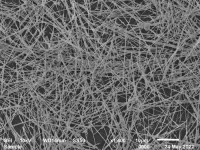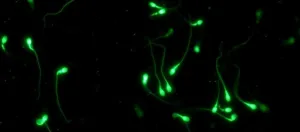(Press-News.org) For some, the eyes are a window into the soul. But for Jayashree Kalpathy-Cramer, PhD, professor of ophthalmology at the University of Colorado School of Medicine, they're a window into human health.
The researcher was granted $300,000 by The Michael J. Fox Foundation this fall to analyze clinical data curated at the Sue Anschutz-Rodgers Eye Center using artificial intelligence (AI) in an effort to identify biomarkers of Parkinson’s disease, a progressive disorder that affects the nervous system and causes uncontrollable movements, such as shaking, throughout the body.
“This approach could be impactful because there is a lot you can learn from looking at the eyes,” Kalpathy-Cramer, chief of the Division of Artificial Medical Intelligence in Ophthalmology, says of the research she and her team in the CU Department of Ophthalmology will undertake over the next year-and-a-half. “The goal is to predict the disease well before symptoms manifest. This would mean that the patient and the clinician are aware sooner so we can improve future care.”
The eyes have it
Kalpathy-Cramer is optimistic about the role of AI in Parkinson’s disease detection, especially because AI’s implementation to analyze retinal imaging in other diseases — such as schizophrenia, dementia, and cardiovascular risk factors — has shown to be fruitful.
“The eye is very accessible compared to other parts of the body, like the heart, for example,” she says. “We can easily take a photo of the eye, and it can tell us a lot about neurological or cardiovascular conditions. It’s an easy way to get a sense of the overall health of the patient.”
Kalpathy-Cramer and her team will also have a lot of data to pull from at the eye center for the research. Working with UCHealth’s Health Data Compass, School of Medicine IT, and guidance from Colorado Multiple Institutional Review Board, plus regulatory, compliance, and informatics leaders on campus, her team has created a large retrospective dataset consisting of images and health records for patients seen at the Rocky Mountain Lions Eye Institute over the last decade in a highly secure research repository.
They are currently using AI to better curate the data through the analysis of structure and unstructured records.
“We will have access to eye exams and a lot of other information, including basic demographics, potential diseases a patient might have, and when they were diagnosed,” she explains.
Using that data to train AI to look for biomarkers could clue researchers into a lot about Parkinson’s disease, like how it presents and potentially how it evolves over time.
A view of the future
Kalpathy-Cramer hopes to expand the scope of work in the future and look at larger and more diverse data.
“If we can incorporate different modalities, we might be able further improve our ability to more accurately predict disease prevalence and incidence,” she says. “New developments in machine learning and AI allow us to analyze data at unprecedented scales. Our goal is to utilize the large amounts of retrospective clinical data to better care for our patients in the future.”
Work on the research is expected to start Nov. 1 and last 18 months.
“We are extremely grateful to The Michael J. Fox Foundation and their interest in exploring and funding this work,” Kalpathy-Cramer says. “It’s a phenomenal initiative, and they’ve funded a lot of groundbreaking work. It has been a wonderful experience to work with them so far.”
END
CU Ophthalmology researcher funded to study Parkinson's disease biomarkers
2023-11-01
ELSE PRESS RELEASES FROM THIS DATE:
UTSA researchers develop energy-efficient AI with $2 million NSF grant
2023-11-01
Fidel Santamaria, a professor in the UTSA College of Sciences’ neuroscience, developmental and regenerative biology department, received a $2 million grant through the National Science Foundation’s Emerging Frontiers in Research and Innovation (EFRI) program to develop new artificial intelligence (AI) applications in the most energy-efficient manner yet.
For machine-learning tools to analyze new data, they must first sort data into various categories. For example, if a tool is sorting photos by color, then it needs to recognize which photos are red, yellow or blue to accurately classify them. While this is an easy chore for a human, the task presents a ...
The secret to enhancing consumer valuation and addressing the climate crisis at once: introduce circular take-back programs
2023-11-01
Researchers from Boston University published a Journal of Marketing study showing that tapping into consumers’ sense of ownership prompts them to place a higher value on products from a circular economy.
The study, forthcoming in the Journal of Marketing, is titled “Affording Disposal Control: The Effect of Circular Take-Back Programs on Psychological Ownership and Valuation” and is authored by Anna Tari and Remi Trudel.
Governments worldwide view a circular economy as part of the solution to the climate crisis. In the U.S., several states such as California, Connecticut, Maine, Oregon, and ...
Plastic-eating bacteria turn waste into useful starting materials for other products
2023-11-01
Mountains of used plastic bottles get thrown away every day, but microbes could potentially tackle this problem. Now, researchers in ACS Central Science report that they’ve developed a plastic-eating E. coli that can efficiently turn polyethylene terephthalate (PET) waste into adipic acid, which is used to make nylon materials, drugs and fragrances.
Previously, a team of researchers including Stephen Wallace engineered a strain of E. coli to transform the main component in old PET bottles, terephthalic acid, into something tastier and ...
Younger Middle Eastern patients with new acute coronary syndrome more likely to smoke, have high cholesterol
2023-11-01
Young patients from the Middle East and Gulf region presenting with acute coronary syndrome have a greater prevalence of risk factors, including smoking and high cholesterol compared to older patients also presenting with first acute coronary syndrome. The study, presented at the American College of Cardiology Middle East & Eastern Mediterranean 2023 conference, found these patients still had similar outcomes compared to older patients.
Acute coronary syndrome (ACS) describes a variety of cardiovascular conditions related to sudden reduction in blood flow to the heart, including heart attack and unstable angina ...
Reducing breast cancer disparities in Delaware: 'Getting the village back together'
2023-11-01
There’s a tried and proven pathway to reducing racial disparities in cancer in Delaware. It worked with colon cancer 10 years ago and should now be applied to the incidence of breast cancer in the state. That's the recommendation of clinicians, program leaders and researchers from the ChristianaCare Helen F. Graham Cancer Center & Research Institute in a new commentary published in Population Health Management on Nov. 1, 2023.
The commentary — "Reducing Racial Disparities in Breast Cancer: Getting the ...
New research links high salt consumption to risk of Type 2 diabetes
2023-11-01
Those at risk for Type 2 diabetes may already know to avoid sugar, but new research suggests they may want to skip the salt as well.
A new study from Tulane University published in Mayo Clinic Proceedings found that frequently adding salt to foods was associated with an increased risk of developing Type 2 diabetes.
The study surveyed more than 400,000 adults registered in the UK Biobank about their salt intake. Over a median of 11.8 years of follow-up, more than 13,000 cases of Type 2 diabetes developed among participants. Compared ...
New resource gives business leaders a blueprint for optimizing equitable employee health and well-being
2023-11-01
DALLAS, November 1, 2023 — Health outcomes research has shown that workers in the U.S. experience inequitable health and well-being, with significant variations in the burden of chronic disease, mental health conditions, food insecurity and more across populations, even among those covered by employer-sponsored insurance.[1], [2] Recent studies demonstrate how the workplace can serve as a social driver of health, impacting the risk of conditions such as high blood pressure and heart disease.[3], [4] This growing ...
Nanowire ‘brain’ network learns and remembers ‘on the fly’
2023-11-01
For the first time, a physical neural network has successfully been shown to learn and remember ‘on the fly’, in a way inspired by and similar to how the brain’s neurons work.
The result opens a pathway for developing efficient and low-energy machine intelligence for more complex, real-world learning and memory tasks.
Published today in Nature Communications, the research is a collaboration between scientists at the University of Sydney and University of California at Los Angeles.
Lead ...
Epigenetic signature for obesity found in study of twins
2023-11-01
PULLMAN, Wash. – A susceptibility to gain weight may be written into molecular processes of human cells, a Washington State University study indicates.
The proof-of-concept study with a set of 22 twins found an epigenetic signature in buccal or cheek cells appearing only for the twins who were obese compared to their thinner siblings. With more research, the findings could lead to a simple cheek swab test for an obesity biomarker and enable earlier prevention methods for a condition that effects 50% of U.S. adults, the researchers said.
“Obesity appears to be more complex than simple consumption of food. Our work indicates there’s a susceptibility for this disease ...
Mobile phone use may affect semen quality
2023-11-01
Does electromagnetic radiation emitted by mobile phones affect semen quality? While various environmental and lifestyle factors have been proposed to explain the decline in semen quality observed over the last fifty years, the role of mobile phones has yet to be demonstrated. A team from the University of Geneva (UNIGE), in collaboration with the Swiss Tropical and Public Health Institute (Swiss TPH), has published a major cross-sectional study on the subject. It shows that frequent use of mobile phones is associated with a lower sperm concentration and total sperm count. However, researchers did not ...




